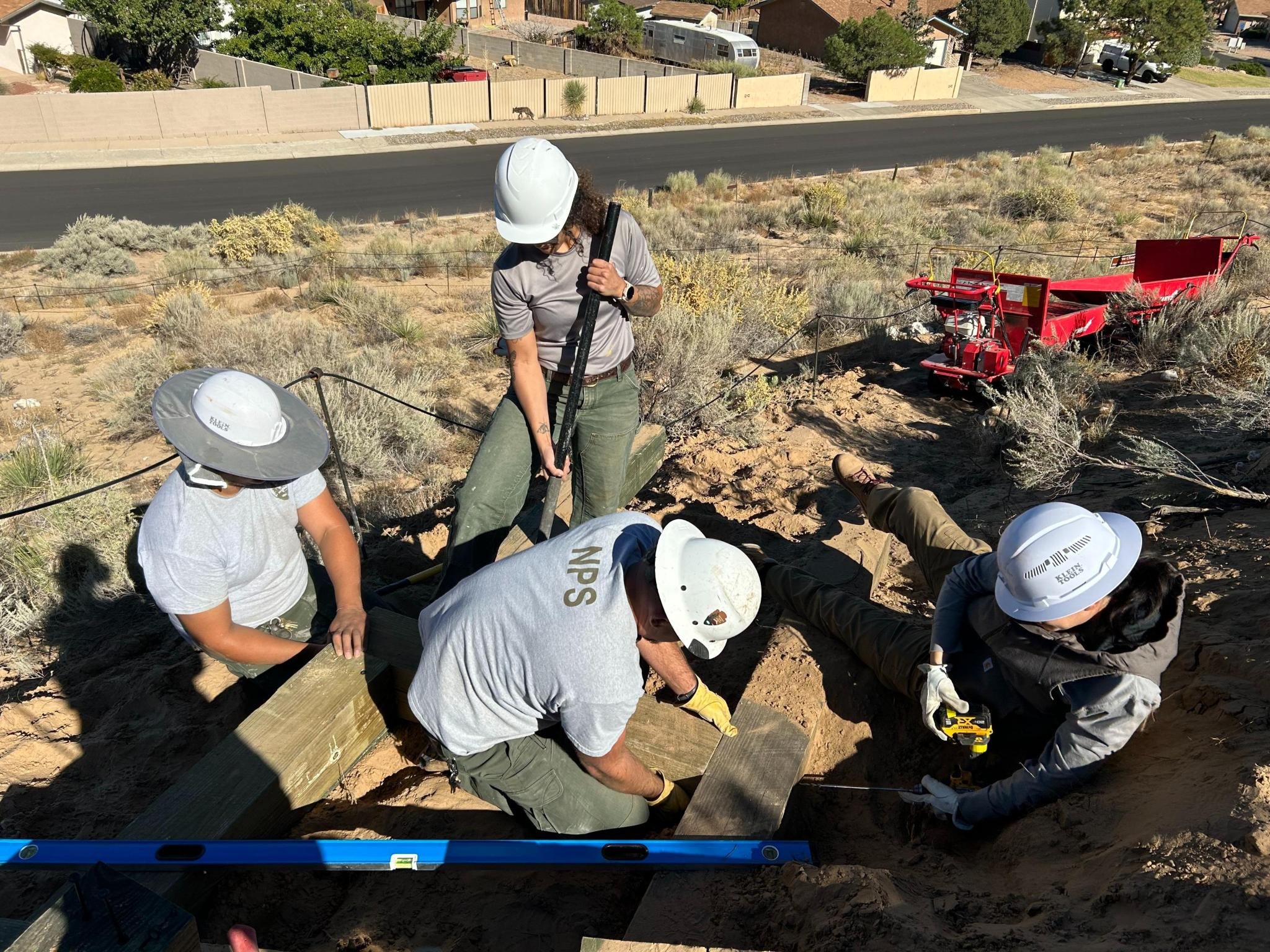Significant Staff Reductions Expected Across National Park Service
This year, a regional Maintenance Action Team redesigned and improved a trail at Petroglyph National Monument, bringing technical expertise that the monument could not fulfill with current staffing. Parks across the country rely on regional and national programs for essential scientific, cultural, administrative, and technical support and leadership. (NPS photo)
For immediate Release April 16, 2025
Contact: resistanceranger@proton.me
UPDATE, April 30, 2025: Internal communications today indicate that mass firings will take place within two weeks, starting as soon as next Monday, May 5. Up to 1,500 positions are expected to be eliminated—up to 8% of the remaining NPS workforce. Internal communications confirm these cuts will target regional and national offices and programs which provide critical support to parks. Follow @ResistanceRangers #NoParksWithout posts on Instagram or BlueSky to learn more about these targeted programs.
The National Park Service (NPS) is preparing for another wave of firings nationwide as soon as this week. These are likely to be much larger than the February 14 firings; leaked reports suggest cuts of nearly 25% across the Department of the Interior. These reductions would paralyze the ability of the NPS to carry out its legally mandated mission.
In a bid to make these cuts less visible to the public—while hamstringing the agency behind the scenes—firings may focus on regional and national programs, instead of park-based staff, according to internal communications. This is in line with a directive issued on April 3 by Interior Secretary Doug Burgum to “ensure visitor access and satisfaction,” even as staffing is being gutted. The NPS has lost 2,400 employees since January 20—12% of its workforce. NPS staff continue to be prohibited from discussing these cuts publicly.
Regional and national NPS offices provide essential scientific, cultural, administrative, and technical support and leadership across 433 disparate park sites across the country. Many small parks have fewer than 15 employees and rely on these offices for specialized support. Among the over 80 programs and offices at risk:
The Volunteer Program supports the work of over 138,000 volunteers in parks nationwide, who donate millions of dollars worth of labor every year. They perform search and rescues, trail maintenance, wildlife surveys, ecological restoration, and more.
The National Register of Historic Places lists special places worthy of preservation as mandated by federal law—sites that are located in nearly every county in the nation.
The Office of Partnerships and Philanthropy facilitates local and national partnerships that contribute billions to parks annually, saving taxpayer dollars and enhancing the NPS’s ability to carry out its mission.
The Historic Preservation Training Center teaches the skills needed to preserve irreplaceable historic structures, from Revolutionary War forts to pre-contact Tribal sites.
The Inventory and Monitoring Program tracks long-term health of park ecosystems, providing the data and knowledge for park managers to make science-based decisions.
"I worked at the Denver Service Center, which supports parks across the country on major construction and infrastructure projects," said recently fired landscape architect, Beth Shrader. "There's just no way individual parks could take on projects of this scale—it wouldn't be an efficient use of staff or funds. Having specialists in regional and national offices, where they can support dozens of park sites, is critical.”
These cuts follow chronic understaffing at NPS: over the past 15 years, the NPS workforce has declined by 20% while park visitation has increased by over 15%. 2024 visitation was the highest in history with over 331 million visits—a fact that parks were instructed not to publicize.
Resistance Rangers is a group of 1000+ off-duty NPS rangers. Our goal is to mobilize support for rangers and public lands, and inspire people to take action to protect them. Learn more at @resistancerangers on Instagram and BlueSky.
Organizers do not represent the National Park Service or Department of the Interior. Views and attitudes expressed in this News Release do not reflect views and attitudes of the NPS or DOI.

